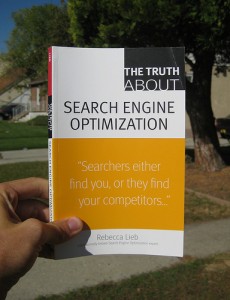Where do you find inspiration for your next website design? If you’re like many business owners and marketers we meet with, it might come from studying the competition.
We regularly meet with people who essentially ask us to re-create other websites they’ve seen, or at least reference their competitors when we want to find out about their design preferences. In a sense, this is completely normal and logical. You probably keep a closer eye on your competitors than anyone else, and since they are in the same industry, their approach could potentially work just as well for your site.

As natural as that line of thinking is, however, I would advise you to look beyond the competition when you’re trying to brainstorm concepts for your next web presence. Here are a few of the most important reasons why…
Inspiration Can Come From Anywhere
When you only look at competitor websites, you can become too locked into a single market or industry. You start getting focused on what you’ve seen, and not what can be accomplished. Sometimes, the best brainstorming comes from taking a look at completely different design inspirations that have nothing to do with your business at all. Once you start looking for new angles, visuals and features that could make a good fit for your business model, the possibilities open up.
Inspiration can come from anywhere, not just inside your own industry. So, when thinking about all the things your website could become, don’t be afraid to open up your search to entirely new and different business types.
Form Should Follow Function
Often, people can become enamoured with a certain look on a favourite website, even though that look might not be a good match for their own company or customers. It doesn’t matter how pretty a website is if it doesn’t end up being useful and meaningful to your most important visitors.
Think about the kinds of customers you want to attract online. Consider what sorts of topics or issues might be on their minds when they arrive on your pages, and what they are hoping to see or discover. Use that as a starting point for figuring out how your new site should look, feel, and act. Let form follow function to get the best long-term results.
You Should Understand Why You Like What You See
In cases where you do really like something you’ve seen from a competitor or business outside of your industry, try to figure out why. What is it about the site that appeals to you? Could it be the colours, the layout of the pages, the white space between elements, or even the fonts you have chosen? It may not be the site at all, but simply how it makes you feel.
By making these kinds of evaluations, you can zero in on your own preferences without creating copies of other sites you’ve seen. You can get the best, without having to worry about carrying over (copying) design elements that might not be a great fit for your topic or audience.
There Are Always Business Considerations
Of course, there are always more pieces you can add to a new website. That’s why it’s important to separate the elements that really increase its functionality or appeal from those that simply fall into the “bells and whistles” category. Getting a great website isn’t just about choosing a “look”, there is also a balancing act to achieve when it comes to complexity.
Each new special item you add to your website could involve an additional cost. That’s especially true for special apps and built-in features which can require software subscriptions, manual coding time, and/or additional maintenance and security testing for your website. All of these add to your schedule, and to the cost.
There’s nothing wrong with looking to your competitors for inspiration on a new website. Nearly everyone does it, and it can make for a good starting point when you’re thinking about what you want to see on your new or upgraded layout. Ask your design partner about current trends, standards, platforms and budget-friendly options before setting anything in stone.
In the end we simply don’t want to get too focused on someone else’s webpages, or narrow your attention to tightly on your own industry or area. In the end, your website has to match your customers and business model. Everything should be put in place with the goal of helping you grow your organization, not incorporated simply because it looked interesting somewhere else.
Digital & Social Articles on Business 2 Community
(25)
Report Post







